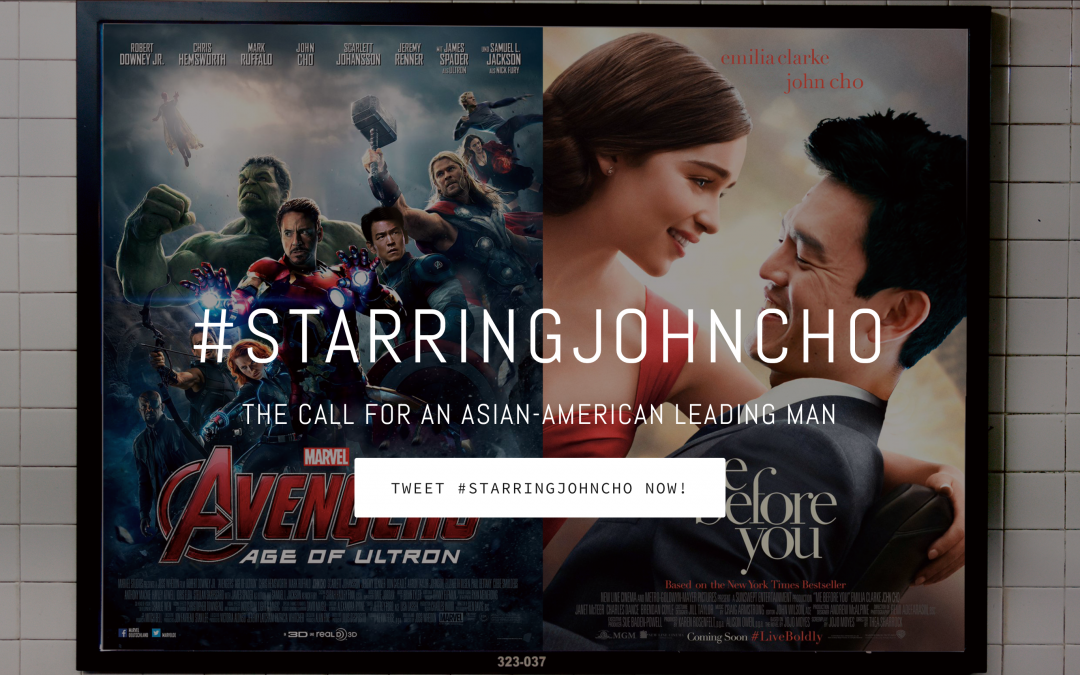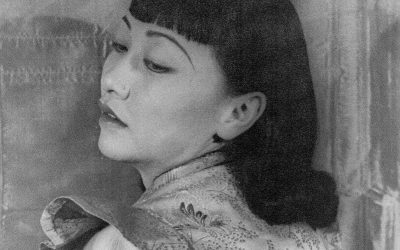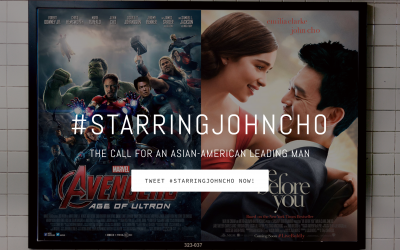(Image credits: #StarringJohnCho images and movie mockups originate from http://starringjohncho.com/)
With 2018 being a banner year for Asian representation in media, 2019 is gearing up to be a blockbuster sequel. Promoting inclusion and representation in mainstream media is a job that is never really finished. For decades Asian-American actors and actresses have worked hard to gain the opportunities in front of the camera that is now giving rise to the more realistic portrayals of Asian-Americans in television and films. However, equal representation is still a far ways off. In the past few years, we’ve seen amazing, creative examples of ways to draw attention to and encourage dialog around representation.
It’s important to note why Asian representation in television and film is worth discussing, which helps to explain the passion behind some of these projects that highlight the issue. First, we know from recent studies at the University of Indiana how media representation of characters can affect children’s self-esteem. Seeing someone who looks like you, that shares your culture in a television show or movie can have a large impact on impressionable children who are constantly scanning their environment for clues to how the world works and their role in it. When on average Asians make-up one percent of lead roles and around five percent of speaking roles, we have to ask how this impacts Asian-American kids growing up consuming this media. What message are we sending?
Some are finding subtle and not so subtle ways to prompt a discussion around Asian representation in film. We’ve seen more and more of these examples in the past few years. Individuals who recognize the issue, want to see change and come up with thought-provoking ways to kickstart the conversation. Late last year we saw Jehv Maravilla and his friend Christian Toledo secretly hang up a poster featuring themselves in a Pearland, Texas McDonald’s after noticing a lack of Asian representation in McDonald’s marketing materials. Another example is the ‘Starring John Cho’ campaign started by a young professional named William Yu.
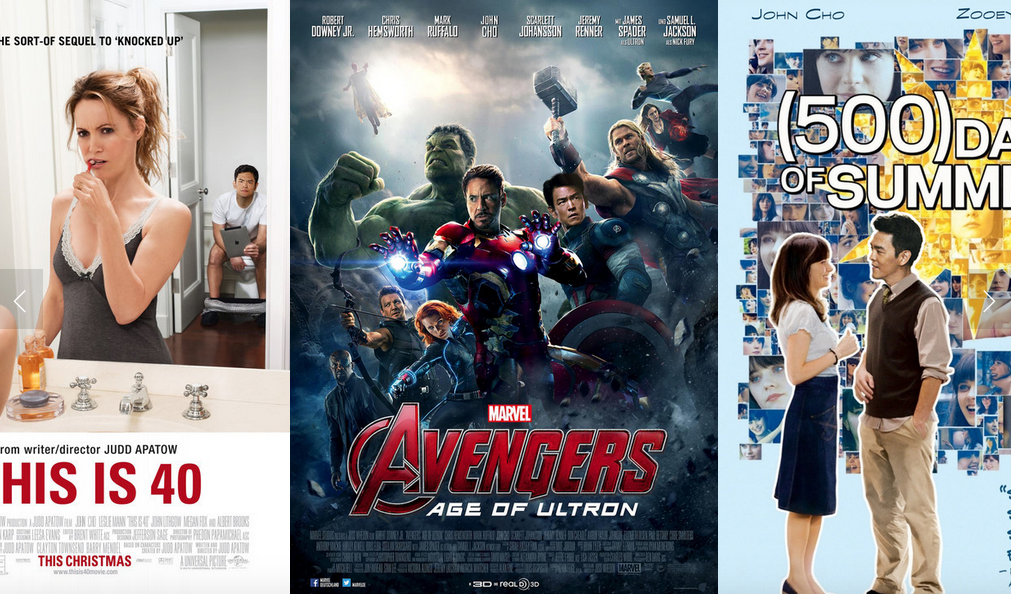
William Yu was not alone in noticing a distinct lack of Asian’s in lead roles, but William decided to do something about it. Yu started #StarringJohnCho, a project that took big-budget Hollywood movies and using Photoshop replaced the lead actor with Asian-American actor John Cho. Visitors to Yu’s website were treated with the visual experience of seeing what their favorite Hollywood movie would look like with an Asian-American in the lead role. The project caught on and gained a ton of notoriety and press coverage, bringing attention to this important conversation in a unique and creative way.
We think one of the most exciting things about William Yu’s project is that it inspires others to step up and take action. His example encourages others to think outside the box, take ownership in changing their world and engage in these important conversations. We are likely to see several more of these unique and creative examples in 2019 and with each one another step forward for Asian representation.
One creative way to highlight and engage in conversations regarding Asian representation online is to use a .Asia domain. The .Asia team has been helping the global Asian community share their story for over a decade. Big brands and many Asian communities world wide already choose .Asia to represent themselves online we hope you will too.
This.Is.Asia Newsletter Issues
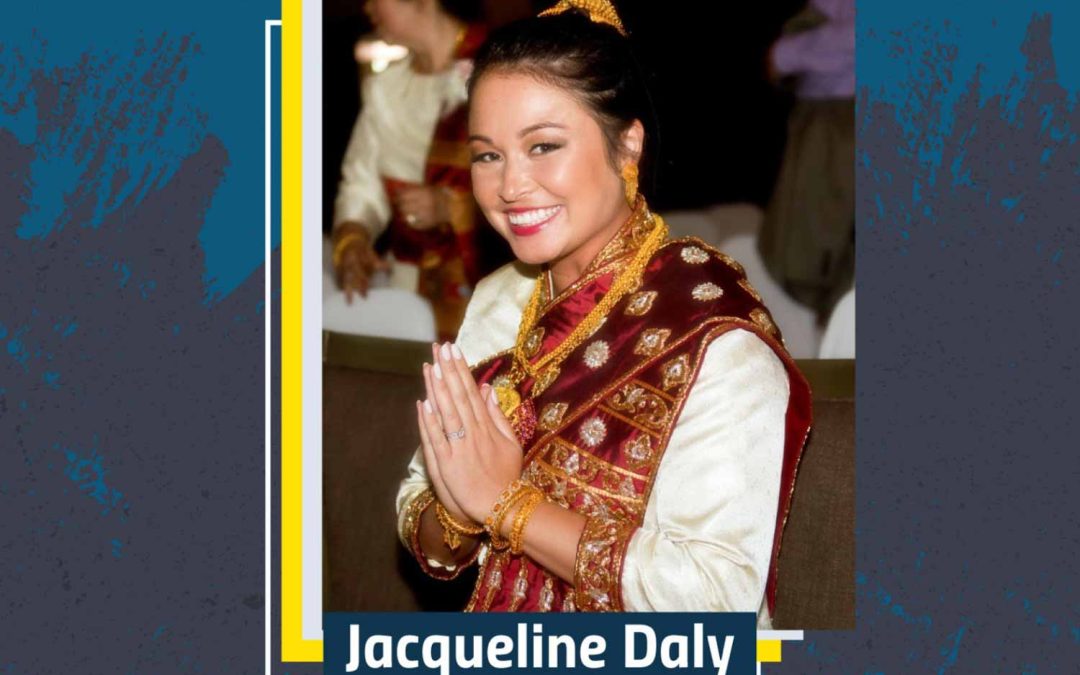
AAPI Heritage Month: Interview with Jacqueline Daly
To me, AAPI Heritage Month is a great time to reflect and celebrate my Asian heritage and all the family traditions that have made my life so culturally rich. I am very proud to be an Asian American. I think this is a great opportunity for communities to come together and learn about our diverse stories through a more inclusive lens.
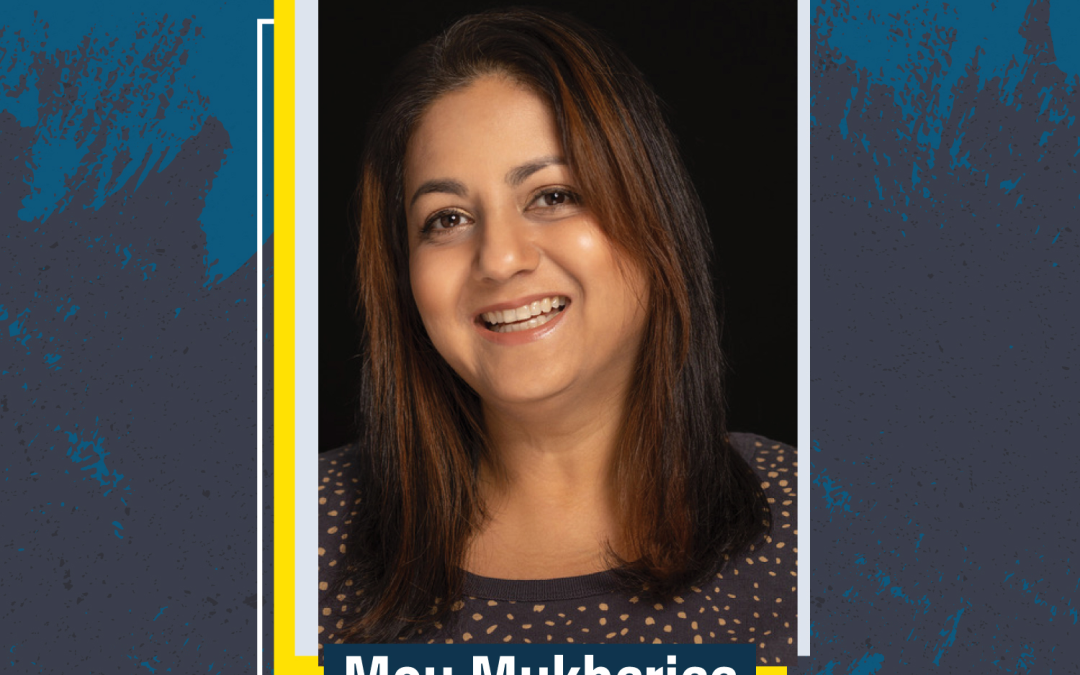
AAPI Heritage Month: Interview with Mou Mukherjee
In some ways, I abandoned my culture when I was young because I was trying so hard to fit in. My parents were, and still is very cultural. Growing up, there was always Indian music playing, our house was full of Bengali literature, my Dad’s hero was poet Rabindranath Tagore, and he also loved the films of Satyajit Ray. I was surrounded by culture and yet I couldn’t fully embrace it at the time.
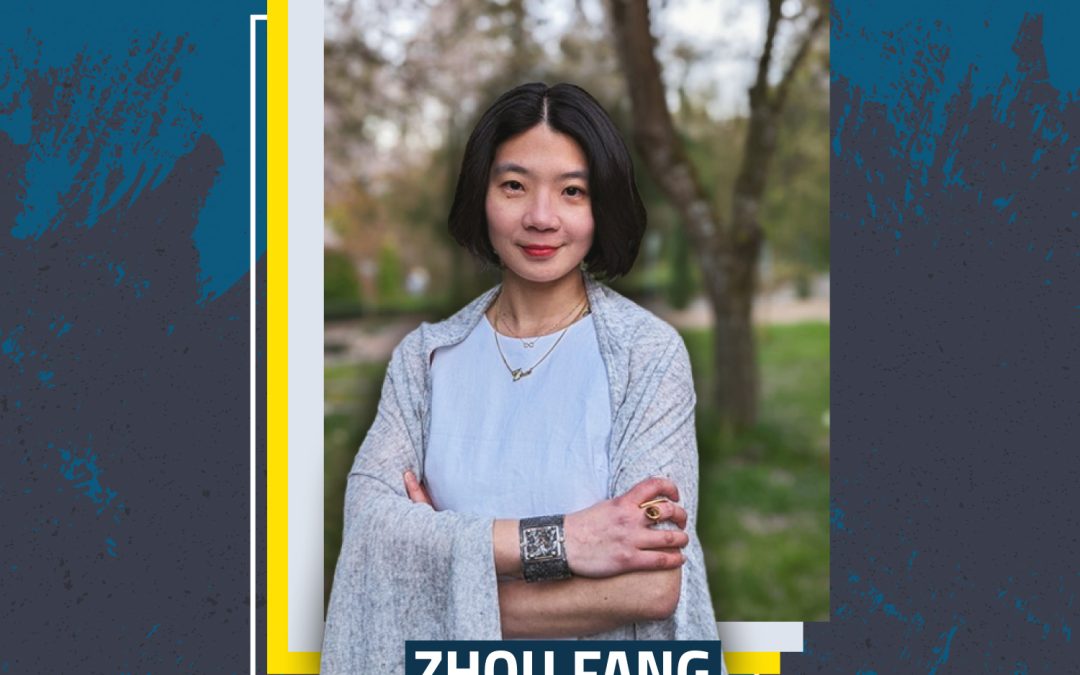
AAPI Heritage Month: Interview with Zhou Fang
I am an immigrant from Guilin, China. In 2010, I moved to the U.S. for grad school. After graduating from Kansas State University (Go Cats!) I moved to Oregon and have been living in Portland for the last 9 years.

Mid-Autumn Festival 中秋节快乐
中秋节与春节丶清明节丶端午节并称为中国四大传统节日。受中华文化的影响,中秋节也是东亚和东南亚一些国家尤其是当地的华人华侨的传统节日。 中秋节,农历八月十五,又称仲秋节丶拜月节丶女儿节或团圆节,是中国的传统文化节日,因其恰值三秋之半,故名中秋。中秋节始於唐朝初年,盛行於宋朝,至明清时,已成为与春节齐名的中国主要节日之一。 2006年5月20日,中国国务院在中央政府门户网上发出通知,批准文化部确定并公布中秋节例在第一批国家级非物质文化遗产名录。自2008年起中秋节被列为国家法定节假日。...
